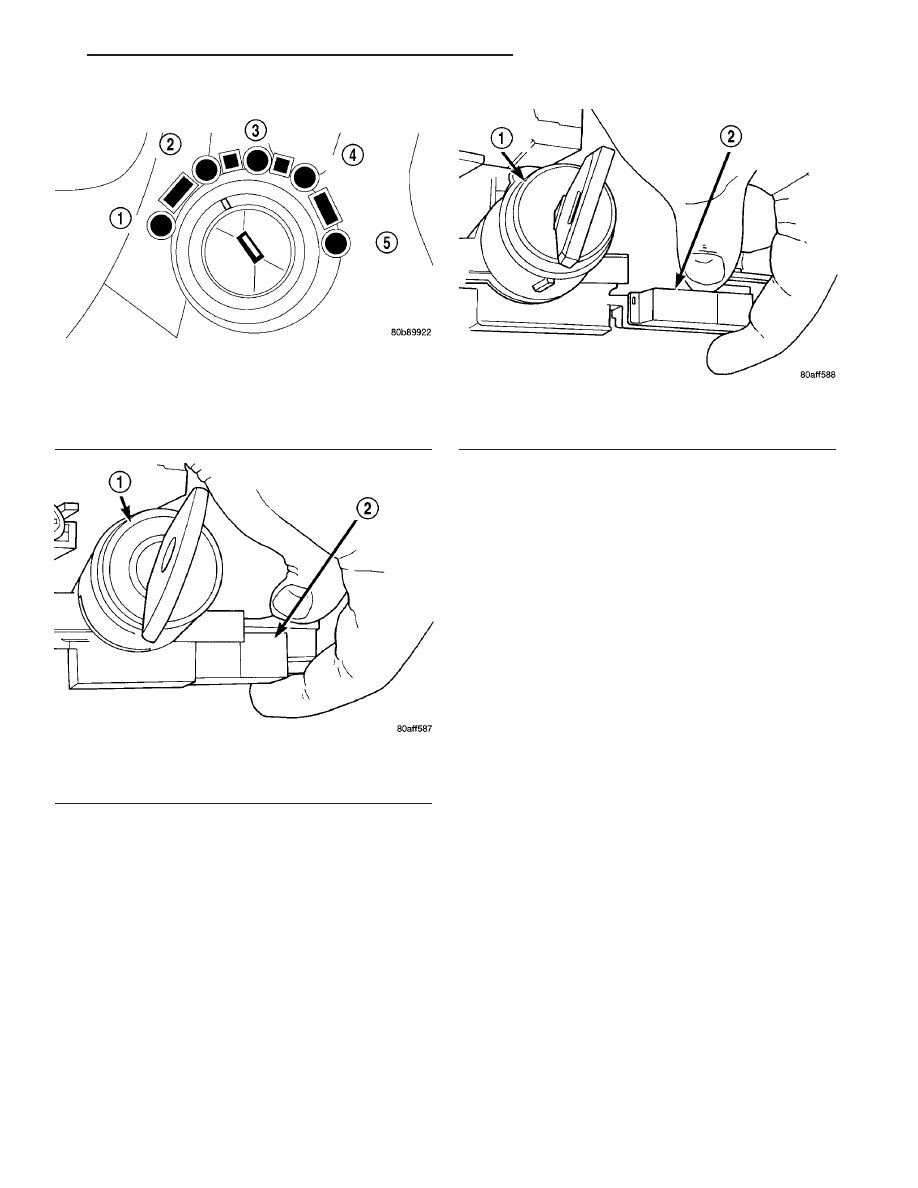Chrysler Sebring, Stratus sedan, Sebring Convertible. Manual - part 601

(13) Remove interlock cable from underside of
instrument panel.
INSTALLATION
CAUTION: When installing interlock cable assembly,
care must be taken not to bend exposed cable wire
and slug at shifter end of cable.
(1) Route interlock cable into lower dash panel and
towards console as removed.
(2) Turn the ignition switch to the ON/RUN posi-
tion (Fig. 294).
(3) Install the interlock cable into the interlock
housing at the steering column (Fig. 296). Verify the
cable snaps into the housing.
(4) Install nylon cable retainer to lower column
mounting stud.
(5) Connect BTSI solenoid connector.
(6) Insert interlock cable core wire into interlock
adjustment lever groove. Make sure the interlock
cable slug is seated in the groove (Fig. 291).
(7) Insert interlock cable adjuster end into bracket
and snap into place (Fig. 291).
NOTE: The Interlock Cable MUST be adjusted.
(Refer to 21 - TRANSMISSION/TRANSAXLE/AUTO-
MATIC - 41TE/SHIFT INTERLOCK CABLE - ADJUST-
MENTS)
(8) Install center console assembly (Fig. 289).
(9) Install gearshift bezel (Fig. 287).
(10) Install the gearshift knob and tighten set
screw (Fig. 287) to 2 N·m (20 in.lbs.).
(11) Tilt wheel to full down position and install
upper steering column shroud.
(12) Install steering column lower shroud (Fig.
293).
(13) Install lower knee bolster screws and knee
bolster.
(14) Install fuse panel cover (Fig. 292).
(15) Connect the battery negative cable.
ADJUSTMENTS
BRAKE/TRANSMISSION SHIFT INTERLOCK
CABLE VERIFICATION AND ADJUSTMENT
VERIFICATION
The following chart describes the normal operation
of the Brake Transmission Shift Interlock (BTSI) sys-
tem. If the “expected response” differs from the vehi-
Fig. 294 Ignition Key/Switch Positions
1 - ACC
2 - LOCK
3 - OFF
4 - ON/RUN
5 - START
Fig. 295 Interlock Cable and Connector
1 - IGNITION LOCK CYLINDER
2 - INTERLOCK CABLE
Fig. 296 Interlock Cable At Housing
1 - IGNITION LOCK CYLINDER
2 - INTERLOCK CABLE
JR
40TE AUTOMATIC TRANSAXLE
21 - 165
SHIFT INTERLOCK CABLE (Continued)